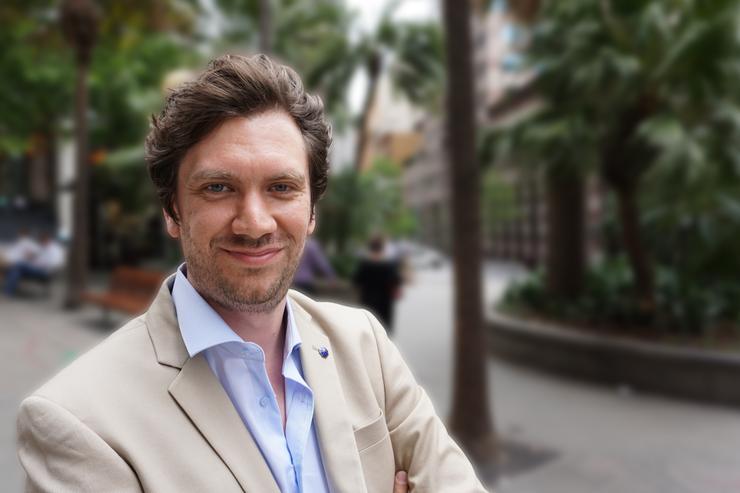
Willow CIO Will Sessions
Willow CIO Will Sessions - along with his colleagues - wants to connect two worlds: the built and the digital.
Like its namesake - the Willow tree - Sessions said the company has roots planted deeply in the built world, along with expertise grounded in buildings and infrastructure, across all stages of the project lifecycle.
In that vein, the company is on a mission to “push the boundaries” and digitise the real estate and construction industries - typically industries slow to adopt digital transformation, and that are often “behind the eight ball,” Sessions told CIO Australia.
Sessions - who has a tech background in the infrastructure world - said the idea is to empower owners of buildings and infrastructure networks to enable smart buildings.
Willow rebranded in April after merging with digital technology company, Ridley, known for the digitisation of buildings with specialist skills in architecture and engineering. Willow’s original life began as a fintech startup in Israel.
In a short timeframe, the company has expanded into the US (New York and Seattle), in London and has accounts in Sydney, Melbourne and Queensland.
Willow partners with customers in Australia including Investa, AXA, Dexus, Star Casino, Grocon and the Ribbon Project in Darling Harbour.
Its WillowTwin technology, for example, enables any building to become smart by integrating existing smart building technology into a digital twin. WillowDigital technology, meanwhile, delivers digital engineering and architecture services to customers.
But while the technology exists to transform “bricks and mortar” assets into living, learning and evolving systems, most buildings today are using multiple, siloed building systems such as fault detection and workforce management - each with their own interface and data set, Sessions explained.
Indeed, the industry faces many challenges - one of which is data overload and the lack of connectivity amongst a multitude of systems.
“One of the biggest things clients are grappling with now is data and buildings being essentially off-line. It’s kind of like entering the pre-internet era where you’ve got portfolios of buildings - there may be a 100 or a thousand of buildings in a portfolio - and they’re unable to analyse the buildings, and unable to extract data out of these buildings (they are all siloed),” Sessions said.
“Each building has a different technology or brand running it and they’re made up of multiple systems. The fragmentation of the industry - into a siloed nature - is making it very difficult for owners.
“The question is, ‘how do we bring all of that data into the cloud, into a single source of truth, that then allows owners to view it, manage it, and understand it and apply new technologies to it.”
An example of its technology in action, Willow chief product officer and co-founder, Dale Brett, said the company recently worked on a project that digitised an existing building at the Microsoft campus, which can now be considered a “smart building.”

“We worked on an existing building with a lot of siloed technology systems. What we’ve been able to do is solve that problem, so connecting in all of the drilling information, all of the 3D models of the building, the active data and live data systems.
“From there, we connected into two partners. One being Microsoft themselves and their Dynamic workflow engine. . . and then also working with a partner called Iconic, who do all of the fault protection on that building.”
Sessions said this type of connected solution now live at the Microsoft campus will resonate with other building owners, who’re bogged down with antiquated building systems. The project on Building 19 on the Microsoft campus started in December last year and went live late last month.
He said typically the industry is in “the dark ages” in terms of building intelligence. “A lot of these systems are running on disparate machines, locked in a basement, that haven’t had any level of security. They aren’t allowed to touch the internet and the owners are chomping at the bit to be able to do something more than they’re doing. I think a lot of the time they don’t quite know where to turn.”
Asked his biggest challenge as the CIO at this highly digitised company, Sessions said it's a balancing act.
“The business has evolved faster than anything I’ve ever experienced in my almost 20 years,” he said, explaining there’s both the traditional architecture flavour to the business and the start-up side.
“We’re recalibrating and pivoting depending on what client’s requirements are. And being able to get into the middle of the mix and be able to help out both sides of that canvas has been a challenge. But the most important takeaway of that is to get everyone on the same page as much as possible.
“We’ve been able to really consolidate all of our data. . . There is a level of legacy, but it’s really important that we have the architectural team, the project team, the product team all on the same page.
He said one of his main priorities has been making sure that the systems are in place.
“So we have a single source of truth. The data is in one place. We have a secure cloud platform. We’re scalable. The biggest thing for me at the moment is just making sure we’re always in communication with each other so we can support everything from the operations, the projects, the strategy, the cloud, and all the behind the scenes things that have to take place as well.
“We’re a very cyclical business in terms of the projects we’re working on. A year ago we didn’t have New York, we didn’t have Seattle, we didn't have London, and we had to bring those on very fast. So it’s about that fine line between the agile and making sure security never takes a back seat.”
Join the CIO Australia group on LinkedIn. The group is open to CIOs, IT Directors, COOs, CTOs and senior IT managers.
